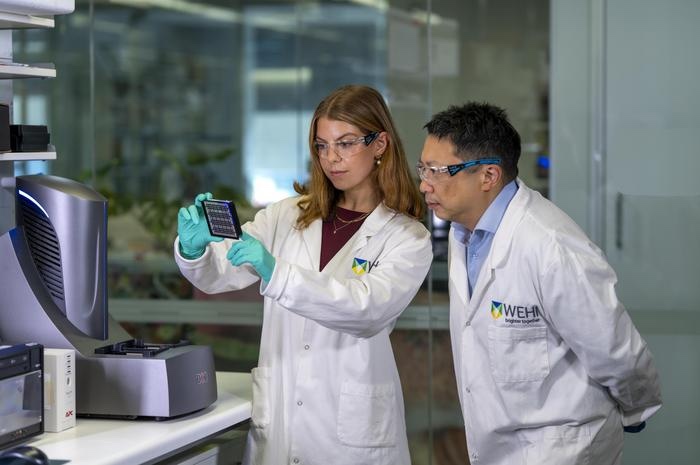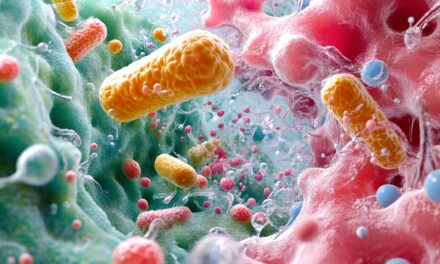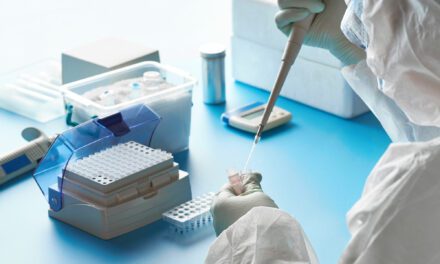Summary:
Australian researchers have developed a groundbreaking blood test that can accurately diagnose celiac disease without requiring patients to consume gluten, offering a safer, faster alternative to current diagnostic methods.
Takeaways:
- The new test detects an immune marker (IL-2) in blood mixed with gluten in a lab setting, achieving up to 90% sensitivity and 97% specificity—even in those on a gluten-free diet.
- It eliminates the need for a gluten challenge, which is often a major barrier to diagnosis due to the physical toll on patients.
- The test performs reliably even in individuals with other autoimmune diseases and could predict the severity of gluten reactions, marking a major advance in celiac diagnostics.
Celiac disease is one of the most common autoimmune illnesses in Australia, caused by an immune reaction to the gluten protein found in wheat, rye and barley. More than 350,000 Australians currently live with the condition.
While early diagnosis is critical to minimizing long-term complications of the disease, up to 80% of cases around the world remain undiagnosed.
The diagnostic process can be confusing for patients and non-specialist doctors, as the reduction in symptoms from a gluten free diet is not always a marker of coeliac disease.
Current Celiac Testing Methods Not 100% Reliable
Current celiac testing methods, serology blood tests or gastroscopy with intestinal biopsy, do not work reliably for those on a gluten-free diet, and require regular gluten consumption to be effective. As a result, many people are deterred from seeking a definite diagnosis because they do not want to consume gluten and be sick.
Associate Professor Jason Tye-Din, Head of WEHI’s Coeliac Research Laboratory and a gastroenterologist at the Royal Melbourne Hospital, said every approved method to diagnose coeliac disease currently requires people to eat gluten.
“There are likely millions of people around the world living with undiagnosed coeliac disease simply because the path to diagnosis is difficult, and at times, debilitating,” Tye-Din says. This new test promises to simplify and speed up accurate diagnosis, while also avoiding the suffering that comes with eating gluten for extended periods to reactivate coeliac disease. By eliminating the need for a gluten challenge, we’re addressing one of the biggest deterrents in current diagnostic practices. This test could be a game-changer, sparing thousands of people the emotional and physical toll of returning to gluten. It’s a major step towards faster, safer diagnosis.”
Critical Signalling
In 2019, WEHI researchers, working with Dr Robert Anderson (now with Brisbane-based Novoviah Pharmaceuticals), made the unexpected discovery that the immune marker interleukin 2 (IL-2) spiked in the bloodstream of people with celiac disease shortly after they ate gluten.
But could this critical signal still appear, even if no gluten had been consumed?
Building on a promising pilot study in 2021 and using a new clinical diagnostic system developed with Novoviah Pharmaceuticals, the research team set out to test the performance and understand the science of an “in-tube” gluten challenge blood test.
In their new study, published in Gastroenterology, the researchers used blood samples from 181 volunteers recruited via the Royal Melbourne Hospital.
This included 75 people with treated coeliac disease (on a gluten-free diet), 13 with active, untreated coeliac disease, 32 people with non-celiac gluten sensitivity and 61 healthy controls.
Participant blood samples were then mixed with gluten in a test tube for a day to see if the IL-2 signal appeared.
PhD researcher Olivia Moscatelli, who was diagnosed with celiac disease at 18, said the team was thrilled to find the test could detect the condition with up to 90% sensitivity and 97% specificity; even in patients following a strict gluten free diet.
“This breakthrough is deeply personal as it could spare others from the gruelling diagnostic process I had to endure. Knowing I’ve played a role in this achievement is a powerful, full-circle moment,” Moscatelli says.
As seen in the previous study, the IL-2 signal only increased in the volunteers with celiac disease, demonstrating the immune response to gluten can be detected in a tube, without a gluten challenge.
“This represents a promising new tool to support diagnosis, especially for people who can’t be diagnosed with the currently available methods.
“We also found the strength of the IL-2 signal correlated with the severity of a patient’s symptoms, allowing us to predict how severely a person with celiac disease might react to gluten, without them actually having to eat it,” Moscatelli says. “The test’s performance in individuals with other autoimmune conditions in addition to coeliac disease, such as type 1 diabetes or Hashimoto’s thyroiditis, is also unmatched. Some diagnostic tests give false positives in the presence of other autoimmune diseases, but this was not an issue for this test. This is largely because the technology we use is highly sensitive and can detect the IL-2 signal at exceptionally low levels. It’s like the equivalent of being able to detect a single grain of sand in a
swimming pool.”
While the ultrasensitive cytokine testing technology used for this study isn’t currently utilized in pathology labs, researchers hope this will change in the future, which would allow this blood test to be widely used by healthcare professionals.
Anderson, co-founder of Novoviah Pharmaceuticals, current president of the International Society for the Study of Coeliac Disease, and a gastroenterologist at Mackay Base Hospital, says the landmark study reflected the WEHI team’s global role as leaders in translational immunology.
“I have been delighted to have a close and exceptionally productive collaboration with Professor Tye-Din that launched innovative therapies and now diagnostics harnessing the gluten-specific T cells we obsessively characterized in studies over the past 25 years,” Anderson says.
The WEHI team is now collaborating with Novoviah Pharmaceuticals to confirm the test’s accuracy across diverse populations and accrue critically needed real-world data.
The research is supported by Coeliac Australia, Novoviah Pharmaceuticals (who provided the proprietary test for this study), Beck Family Foundation, Butterfield Family, the Veith Foundation and the crucial contributions of the study participants.
Featured Image: Olivia Moscatelli and Associate Professor Jason Tye-Din with the highly sensitive technology used in their study to detect the critical IL-2 signal. Image: WEHI





